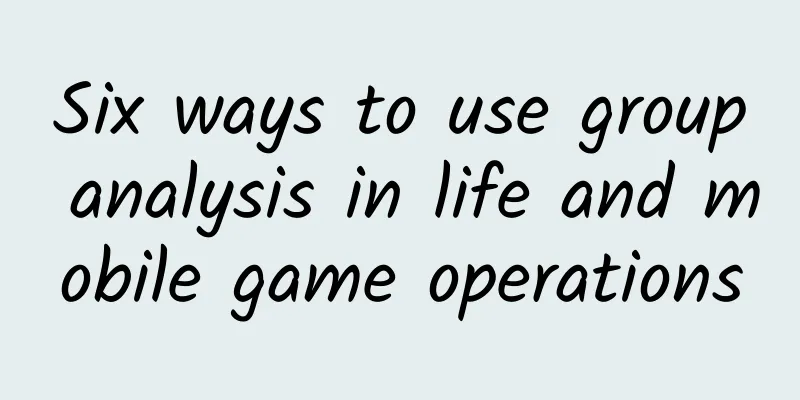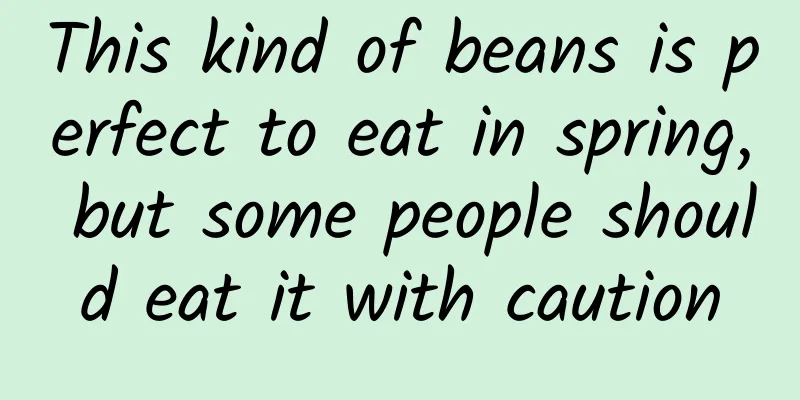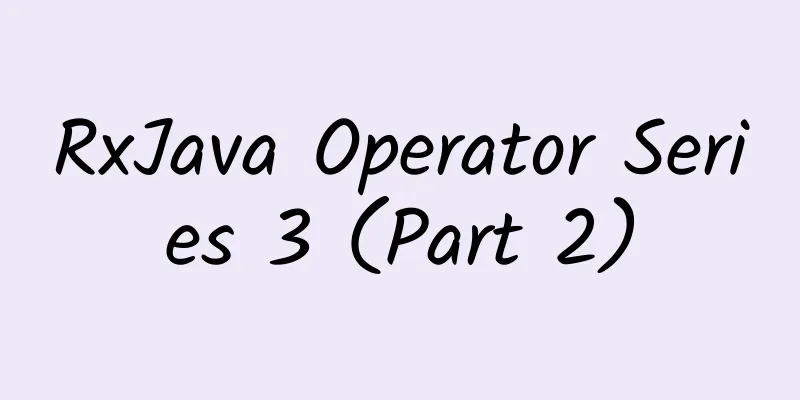Six ways to use group analysis in life and mobile game operations

|
The grouping and classification reminded me of Marie Kondo, a beautiful girl who was on the list of "Time Magazine's 100 Most Influential People in the World in 2015" in addition to politicians, business tycoons, and first-line stars. The reason for her inclusion in the list is that she is particularly good at sorting and organizing the messy things in the company and residence. She also wrote a book about her experience in tidying up the room, "The Book of Tidying Up". This classification method is not only applicable in life, but also in mobile games, users can be analyzed by grouping. Group analysis is one of the most effective ways for app developers to analyze user behavior and improve user stickiness, retention, and profitability. It allows operators to get rid of interfering data and gain unique insights into high-value users. The purpose of group analysis is to allow operators to quickly and easily understand what is happening in the app and summarize the main reasons and methods of user behavior. Through group analysis, more targeted strategies can be implemented. The following points will explore the basic uses of grouping analysis. 1. Track the impact of product updates Suppose a product update was recently released, which modified the first-time user experience (FTUE), simplified the tutorial, and allowed players to enter the game state more quickly. In order to understand the impact of this change on user retention, the test of this impact can be done by using a group analysis method to compare the performance of players before and after downloading the update package. For example, by comparing the proportion of players who have downloaded the update package and those who have not used the update package and open the game again in a week, we can understand whether this change has a positive or negative impact on retention. In order to facilitate further improvement. 2. Identify the most valuable users Which countries are willing to spend money on your game, and where are the most sticky users from? How do iOS users perform compared to Android users? What is the proportion of smartphone users and tablet users? You can use CA to simply divide these users and identify the most valuable users. Then, you can dig deeper into each group to understand how they interact with the product and how they perform differently from other users. This information is invaluable when you build a paid promotion strategy that caters to these most valuable users. 3. Understand the payment habits of whales, dolphins and small fish
When designing a strategy to promote virtual currency sales or in-app purchases to paying users, it is important to understand the most popular consumer groups, also known as "whale" players. Because these "whale" users are closely related to users with lower consumption levels, namely "dolphins" or "small fish" users. Through CA (group analysis), you can quickly understand which in-app purchase is the most popular among paying users in different groups, which price point, level, and through which channel are most efficient, so as to adjust the promotion strategy. 4. Optimize user acquisition strategy By comparing the cohort analysis of a particular ad or a cohort analysis from a reference source, you can quickly see which source generates higher quality users. When performing a cohort analysis, you need to compare the user stickiness level of different sources, the retention rate of different cohorts, the frequency of app and game use, and the overall lifetime value. This data is crucial to the direction of advertising budget and ensure that you are getting the appropriate return on investment. 5. Monitor the impact of external factors Cohort analysis is the best way to understand how external factors affect your app and game retention, user base, and monetization. What happens when a large studio enters the field, or what happens if a distribution platform makes a major change to its operating system, or makes a sudden change of direction? Developers can use cohort analysis to compare user changes before and after these impacts to get a clearer understanding of the potential impact on your apps and games. 6. Comparison between Novice and Experienced Users Understand the differences between long-term retained users and users who have just downloaded the app. So that these apps can be handled in different ways and strategies. When performing group analysis, you must consider how to convert new users into paying users more quickly? What is the best time for in-app purchase promotion? Do senior users open the app at a similar frequency to new users? Is the time they use the app or play the game each time consistent? Group analysis can help answer all these questions. Summarize: Classification and induction not only make life better, but also help developers understand their products and the reasons why users behave in certain ways. It is also an effective way to study user groups and discover major trends. |
<<: Objective-C and the Runtime: Why is this the case?
Recommend
Breadth-first search algorithm applied to Swift mobile game development
[51CTO.com Quick Translation] Swift Algorithm Clu...
Xiao Ming's short video traffic generation and monetization course is a must-have, super monetization rules, and the live broadcast room has gained 200,000+ fans in two days
Xiao Ming's short video traffic monetization ...
If the promotion is ineffective, you need a manual to prevent scams!
After begging for help, drinking and singing and ...
Thoughts on creating popular e-commerce products
In June 2020, I came to Shenzhen and started to b...
Beijing's first batch of websites and apps are accelerating their adaptation to the elderly: Meituan, Didi and others have undergone a "facelift"
IT Home reported on June 30 that according to Bei...
IDC: iPhone shipments to grow at more than twice the rate of Android devices in 2021
According to the latest forecast report released ...
APP promotion: What is it like to operate a bad product?
Someone invited me to answer a question on Zhihu....
A brief discussion on performance optimization in Android
Performance optimization is a big topic. If someo...
Do you have these 5 smells at home? Strange smells at home are really dangerous!
One minute with the doctor, the postures are cons...
10 Tips to Quickly Improve Your User Interface
Creating a beautiful, easy-to-use, and efficient ...
iOS developers should know: which data persistence solutions
Introduction The so-called persistence is to save...
If you want users to click on your ads, try these 5 methods!
We have to admit that we live in an age where adv...
Common bugs in iOS development! (with solutions included)
Preface Have you ever fixed a bug and then discov...
How to create highly sticky products? Use these 3 models!
What is CLV? Those who make products must underst...
Come and see which new animals are going to be made into emoticons!
In the past 2021, many new species officially app...









